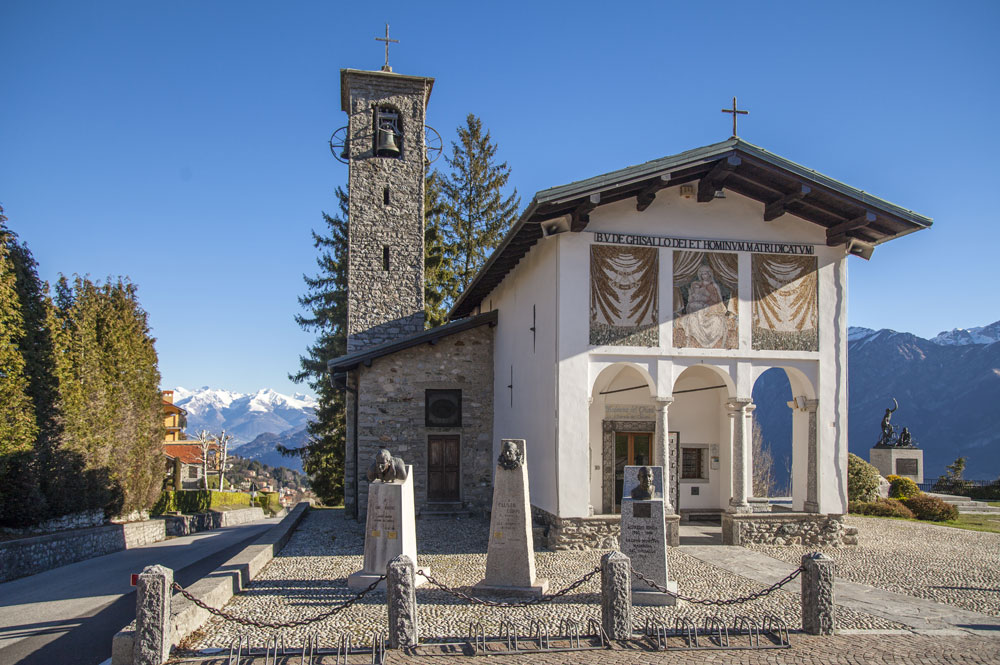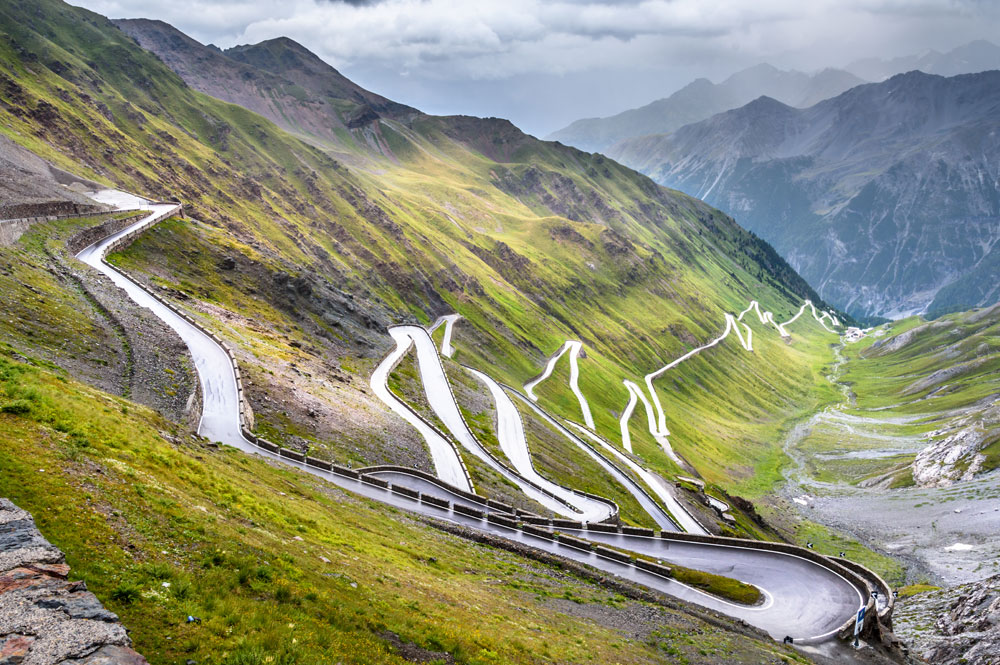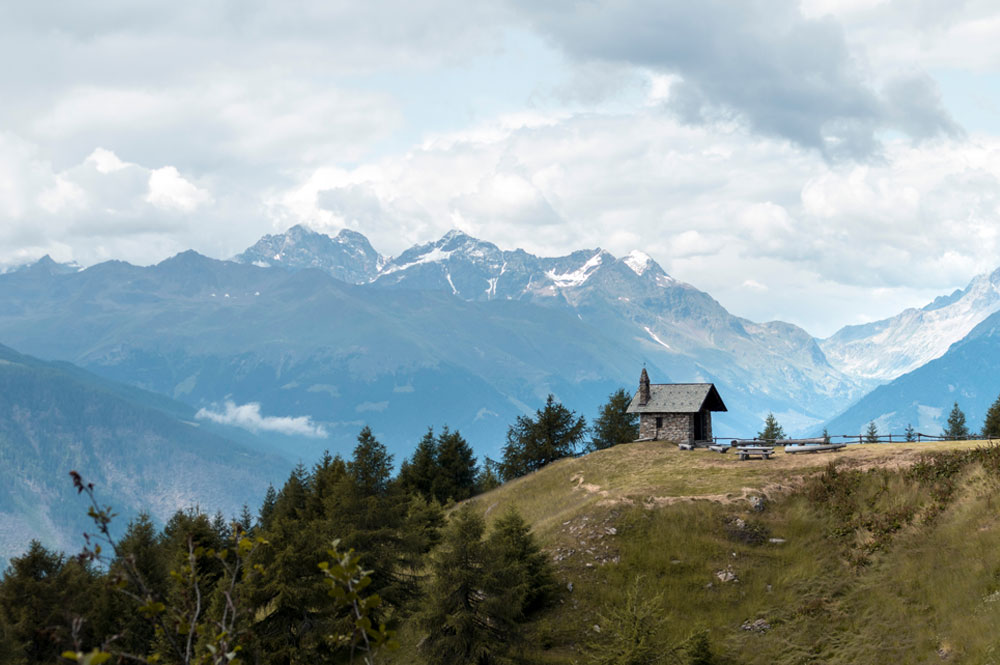Stelvio, Madonna del Ghisallo, Mortirolo, Gavia: Lombardy!
It's quite a list of familiar names: the Stelvio, Mortirolo, Gavia, Madonna del Ghisallo and Muro di Sormano. And what about the next list of names: Felice Gimondi, Ivan Basso, Claudio Chiapucci and Alfredo Binda. Lombardy has a rich cycling history. High and medium mountains, it's all present in the northern Italian region.
Text CYCLOsportive, Image: Shutterstock
Stelvio: Regular views of the snow-capped peaks and glacier
Bergamo and Milan are beautiful cities to visit. In addition, this destination is relatively easy to travel to. After just over 1,000 km you can reach this Northern Italian province from Utrecht by car. But this destination is also easy to reach by plane with the airports of Milan and Bergamo nearby. And with beautiful Granfondos such as GF Felice Gimondi, GF Il Lombardia and GF Stelvio Santini an excellent cycling destination! We highlight a few well-known mountains for you.


Madonna del Ghisallo
The Colle di Ghisallo, as the mountain is officially called, can be roughly divided into three parts. When leaving Bellagio, the road immediately climbs into double figures before narrowing to a single-lane road. After the great hotel with a magnificent view of Lake Como – Hotel di Perlo (the owner arranges rides with former professional Alberto Elli) – a section with many hairpin bends begins with occasional wide views of the many mountains surrounding the lake. After a relatively long straight stretch, the toughest part is over. The town of Civenna provides a pleasant break to provide your overloaded legs with new oxygen. For those who have not prepared, it seems as if the top of the Ghisallo has already been reached, as evidenced by some beautiful churches on the left. To the left of the road, the eastern branch of Lake Como reveals itself to the attentive cyclist. With just under two kilometres to the Ghisallo, the road climbs for the last time. This time less tough than the initial phase, but certainly not to be underestimated. Seven hairpin bends make the fairly steep section somewhat flattened. After the last bend follows a straight section. The famous church 'Madonna del Ghisallo' looms in the distance. The Ghisallo has been conquered and a monumental climb can be added to the list of honours.
We have been cycling in Lombardy before. And have already found out for you where you can stay. If you book the trip via CYCLOsportive, we will also take care of a number of extras. Think of routes and possibly a starting ticket and registration for a Granfondo


Stelvio Pass
The Stelvio has three climbs: from Bormio, Prato allo Stelvio and Switzerland (the Umbrail Pass) which connects to the climb from Bormio one kilometre before the top. I only include the first two sides, although the Umbrail was given a place in the hall of fame of Dutch sporting moments in 2017 due to the famous poop incident of Tom Dumoulin.
From Prato – the classic side – the climb runs along a river for the first part. When the road crosses it, the actual climb begins. You regularly have views of the snow-capped peaks and glacier of the Parco Nazionale dello Stelvio / Ortler Massif. The first few kilometres are partly through coniferous forest. From this moment on, your legs never get a rest, except in one of the 48 hairpin bends that curl this route upwards. The gradient fluctuates continuously between eight and nine percent. The last ten kilometres go through alpine pastures. This last part can be captured beautifully on camera from the top.
More information about Passo Stelvio


Mortirolo Pass
The Passo del Mortirolo is at an altitude of 1852 metres. The Mortirolo is also called the Passo della Foppa. However, some sources indicate that they are two different passes, which are in line with each other but differ in height (the 1852-metre-high Foppa gives way only slightly to the 1892-metre-high Mortirolo). There are therefore two signs around the summit.
In the village of Mazzo di Valtellina, the way up is difficult to find. Once on the right route, the foot of the climb winds through the outskirts of the village into the forest. The first three kilometres are reasonably doable. The road is very narrow from the start; the width of a car. Passing lanes have been constructed here and there. The next six kilometres are particularly tough. The average gradient is around twelve percent, of which one kilometre is around fourteen percent. In this last section, you regularly encounter peaks of up to eighteen percent. You don't encounter any hairpin bends. The last kilometres of the Strada del Mortirolo – from the monument in memory of Marco Pantani – are then relatively easy with an average of nine percent.
The Mortirolo can be climbed from four sides, of which the two western sides are the hardest. The climb from Mazzo di Valtellina is considered the hardest and is therefore probably considered a classic. This side is therefore usually included in the Giro.
More information about Passo Mortirolo











